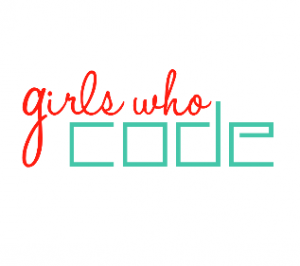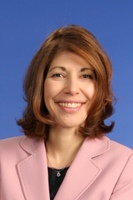WPI’s partnership with the organization “allows us to touch the thousands of young women who have been through this intensive introduction to coding,” Tichenor says. “We know they’re already excited about the possibilities of careers in computer science. At WPI not only do they come into a community of learners that encourages people from all perspectives to do real-world problem solving, but they are able to solve problems that are of great importance to people.”
Tichenor says programs like Girls Who Code are important because “the greatest barrier to getting girls interested in science, engineering, tech—and computers specifically—is the perception that they are not good at it. Self-efficacy is a huge issue for girls,” she says. “They are predisposed to think they are not good at anything to do with computers. So they self-select out of it.
 “The best way to encourage them to consider the field is to show them in the early middle school and high school grades that computing is something they can succeed at and enjoy,” she says.
“The best way to encourage them to consider the field is to show them in the early middle school and high school grades that computing is something they can succeed at and enjoy,” she says.
Girls Who Code achieves that goal by providing a girls-only environment, allowing them to experiment and learn without comparing themselves to boys, who often seem to intuitively understand coding. Also, the program shows girls that computer science skills can be used to help people, the environment, and society–values that many girls hold, says Tichenor, adding, “Many girls are pleasantly surprised to learn they do enjoy computing.”
The WPI/GWC Alumni scholarship was established in part to provide incentive for girls to continue to pursue computer science in college, says Tichenor. Many of the girls who attend the programs come from backgrounds where they may not realize Girls Who Code can open doors to college and scholarship opportunities, she says.
“The symbolic aspect of the partnership is that there is a connection to a college. Through these scholarships, we will, I hope, diminish perceived barriers,” she says.
And those barriers must come down, because highly skilled workers are needed in the technology sector to ensure that our nation remains competitive in the global economy. The U.S. Department of Labor projects that by 2020, there will be 1.4 million open jobs in computing. Yet U.S. universities are expected to produce enough qualified graduates to fill less than 30 percent of those jobs, and women are on track to fill just 3 percent.
“We need every brain available—women, first-generation students, students from urban and rural backgrounds, and underrepresented minority students—to meet the talent requirements of the U.S. We bring them to WPI, where they can get the skills they need and we have employers ready to hire them,” says Tichenor.
Once girls interested in computer science get to colleges like WPI, the next step is to provide support to help them succeed, says Tichenor. Often, young women come in as computer science majors, but get discouraged and change fields if they get a bad grade. “We need to get students understand from Day 1 that these are challenging fields, and every student gets the occasional bad grade. It’s just a part of the learning process,” she says.
The team-oriented learning at WPI also helps support girls’ sticking with technology majors, because girls tend to prefer to work collaboratively, rather than in isolation, says Tichenor.
She says that initiatives like the WPI/Girls Who Code scholarship are part of a longstanding effort by WPI to give middle and high school students early exposure to STEM subjects. WPI summer programs like Frontiers and Camp Reach have shown many young girls they can be successful at and enjoy science and technology.
“There’s a snowball effect. The more women we bring to WPI, the more women who are unsure about technical majors are tempted to get their feet wet,” she says. “It’s a way of creating institutional norms that encourage other populations to jump in.”
– BY CATE PRATO
 That’s why WPI has just partnered with the organization Girls Who Code to offer five new $20,000 scholarships to the group’s alumnae. President Laurie Leshin made the announcement during the 2016 Commencement exercises, which featured Girls Who Code founder and CEO Reshma Saujani as the keynote speaker.
That’s why WPI has just partnered with the organization Girls Who Code to offer five new $20,000 scholarships to the group’s alumnae. President Laurie Leshin made the announcement during the 2016 Commencement exercises, which featured Girls Who Code founder and CEO Reshma Saujani as the keynote speaker. “The best way to encourage them to consider the field is to show them in the early middle school and high school grades that computing is something they can succeed at and enjoy,” she says.
“The best way to encourage them to consider the field is to show them in the early middle school and high school grades that computing is something they can succeed at and enjoy,” she says.